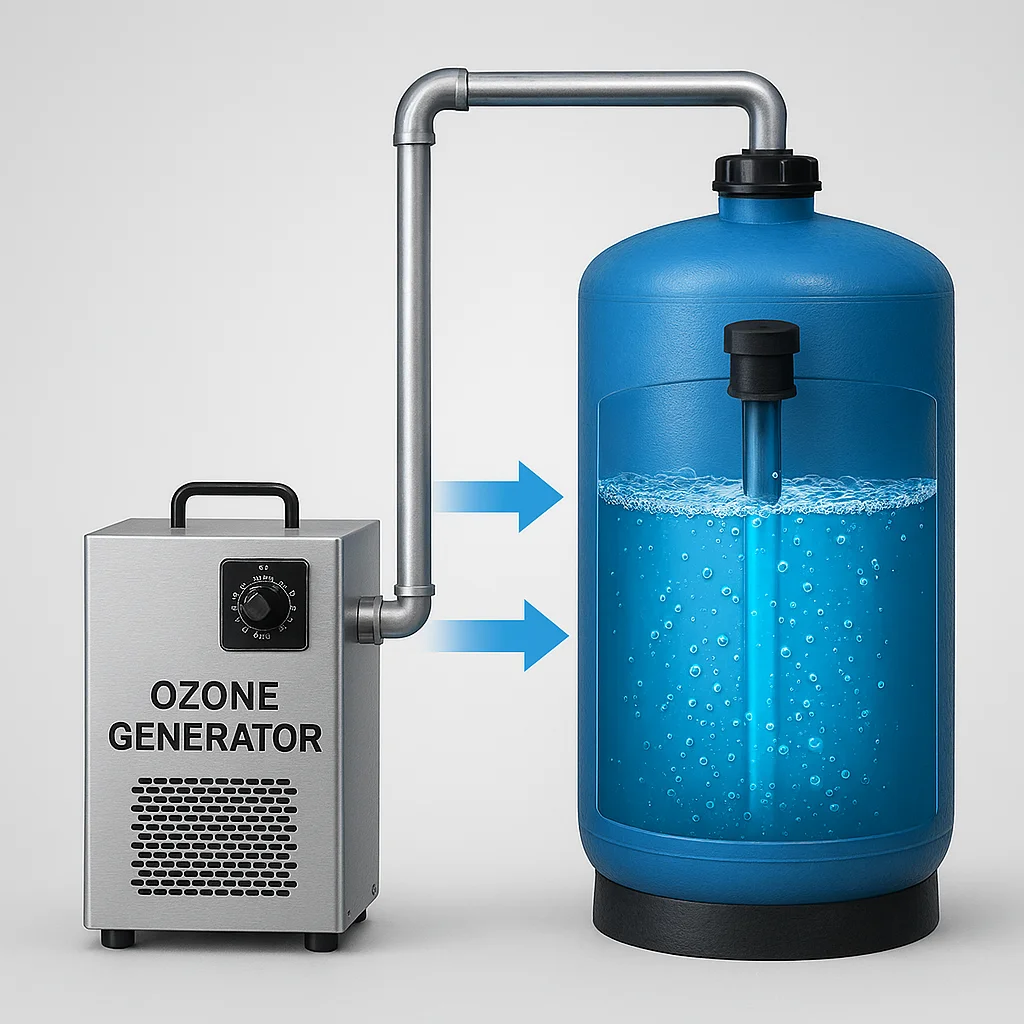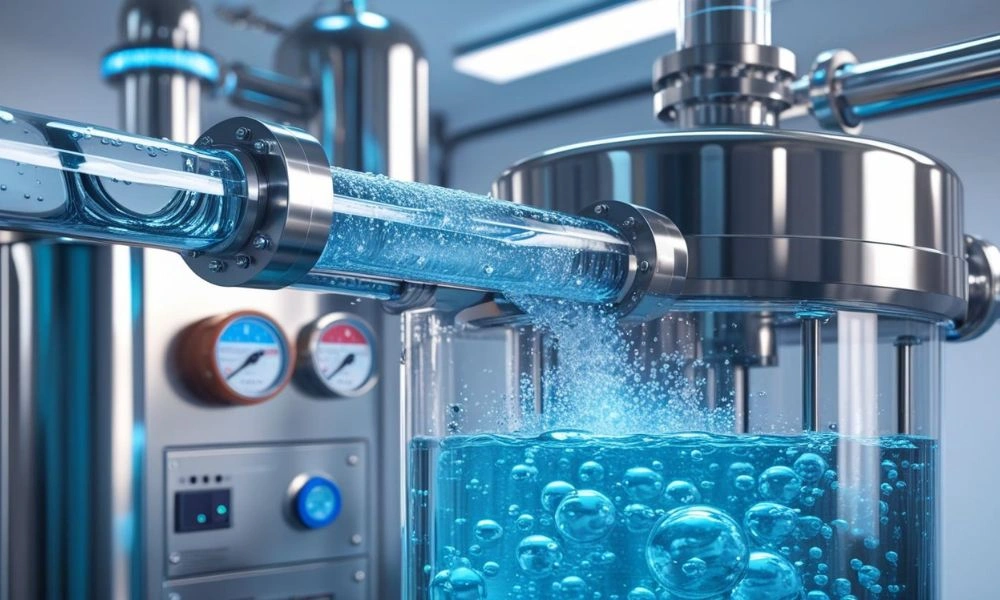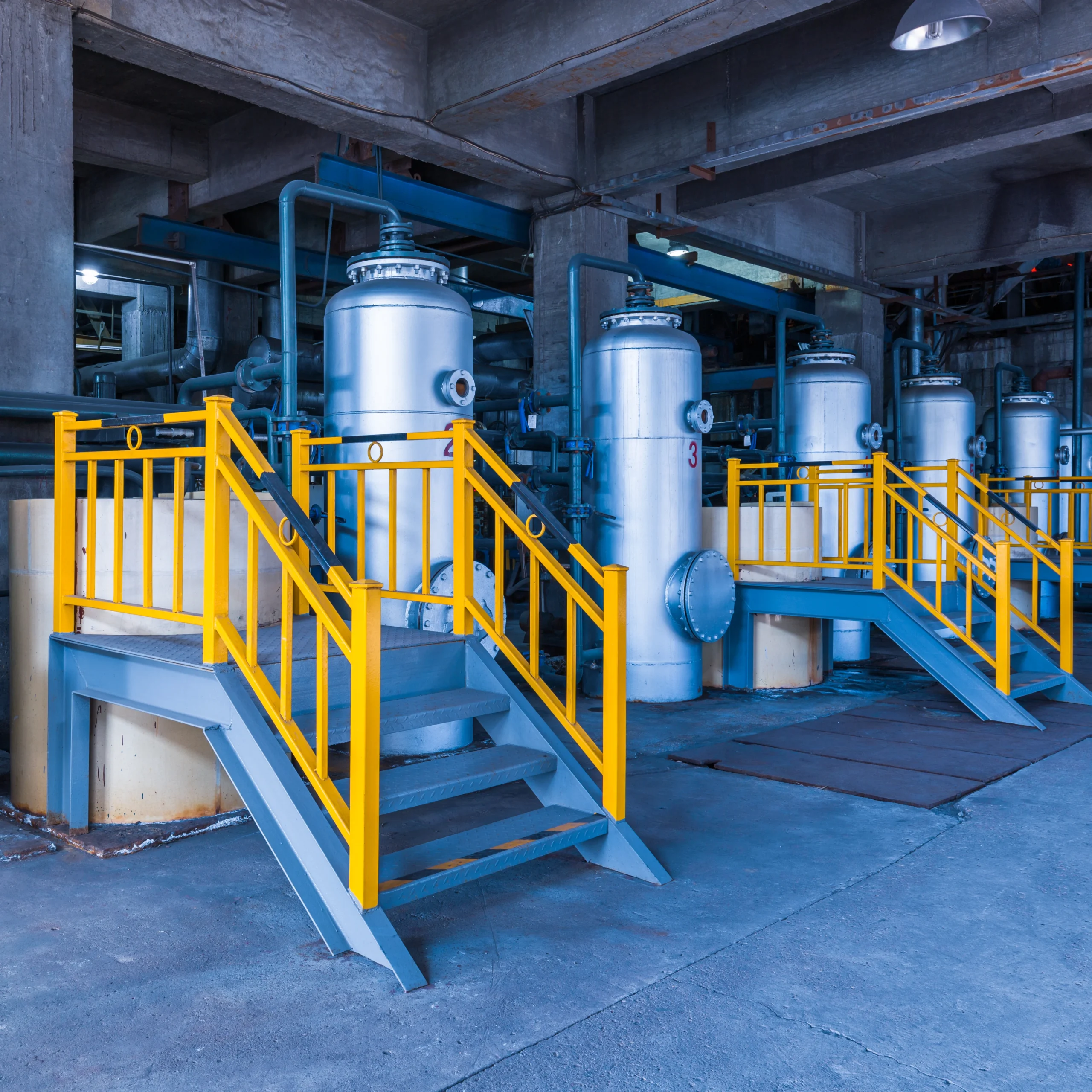Ozone generators provide a powerful, chemical-free method for water treatment, removing bacteria, viruses, and metals. WCSP integrates ozone technology into Pakistan’s municipal and industrial systems for clean, safe, and sustainable water. From drinking water plants to wastewater recycling, WCSP ensures reliable performance and compliance using advanced ozone-based solutions.
Chlorination System
How Does an Ozone Generator Purify Water?
Ozone (O₃) is a highly reactive gas composed of three oxygen atoms. In water treatment, it is used for its powerful oxidizing properties, capable of destroying bacteria, viruses, fungi, and other organic and inorganic contaminants. Ozone generators produce ozone on-site and inject it into water systems to achieve effective, chemical-free purification.
Corona Discharge Method
This is the most common method of generating ozone. It involves passing dry air or pure oxygen through an electrical discharge field (like a spark), which splits O₂ molecules into individual atoms that recombine into O₃.
- Most efficient for large-scale industrial applications.
- Integrated in WCSP’s high-output ozone systems.
- Produces higher ozone concentrations compared to UV methods.
- Works continuously and is scalable, making it ideal for municipal and commercial water treatment.
Ultraviolet Radiation Method
This method uses UV light at 185 nm wavelength to split oxygen molecules, forming ozone.
- Ideal for small-scale or laboratory applications.
- Less energy-intensive but lower ozone output.
- Simple design with minimal maintenance requirements.
- Best suited for low-flow water treatment systems where high ozone concentration isn’t necessary.

Stages of Ozone Water Treatment
Ozone treatment is a multi-stage process that ensures thorough disinfection and oxidation.
Oxygen Feed
Pure oxygen or dry air is fed into the generator as a base source for ozone production. The higher the oxygen purity, the more efficient the process.
Ozone Generation
Using corona discharge or UV light, ozone is generated and immediately directed toward the water stream.
Ozone Injection
Ozone gas is injected into water via diffusers, injectors, or contact chambers. This ensures uniform distribution and maximum contact.
Contact Time
Water is held in a retention tank to allow ozone sufficient time to react with and neutralize pollutants, pathogens, or odors.
Degassing
Any unreacted ozone is removed through degassing and ozone destruct units, ensuring no harmful ozone remains before the water is distributed.
Drinking/Industrial Water Treatment System
Benefits of Ozone Generator Systems
- Powerful Disinfectant:Kills bacteria, viruses, and parasites more effectively than chlorine.
- Chemical-Free: No harmful residues or by-products.
- Removes Odors and Taste: Neutralizes iron, manganese, and hydrogen sulfide.
Decomposes back into oxygen. - Improves Filtration Efficiency: Breaks down organic matter for easier removal.
Typical Applications in Pakistan
- Industrial Water Treatment – Textile, pharma, and beverage industries.
- Municipal Water Plants – For centralized water disinfection
Hospitals & Labs – Pathogen-free water systems.
RO Pre-Treatment – Reduces organic load before RO membranes
Drinking Water Plants – High-purity, odorless, and colorless water output.
WCSP’s Role in Ozone Generator Integration
At WCSP, we specialize in designing and deploying customized ozone-based water treatment systems across Pakistan. Our services include:
- Site-specific system design and engineering.
- Turnkey installation with post-installation support.
- Integration with existing RO and ETP systems.
- Annual Maintenance Contracts (AMCs).
- Operator training and remote monitoring options
Safety Measures When Using Ozone
While ozone is highly effective, safety is paramount:
- Install ozone destruct units*to remove excess gas.
- Use leak detectors to monitor ozone levels
Maintain proper ventilation in ozone system areas. - Train staff on emergency handling and maintenance protocols.
WCSP ensures every system is delivered with built-in safety mechanisms and local compliance.
Cost-Effectiveness of Ozone Water Treatment
Though the initial setup cost is higher than chlorine systems, ozone systems are more cost-efficient long-term due to:
- Minimal chemical purchase.
- Reduced sludge production.
- Less corrosion to pipelines and equipment.
- Lower maintenance when properly managed.
WCSP offers scalable solutions based on your budget and water quality needs.
Drawbacks and Mitigation
While ozone systems are powerful, they require careful handling:
- Short half-life: Must be generated on-site.
- Corrosive at high concentrations: Needs proper materials.
- Higher initial cost: But ROI is higher over time.
WCSP mitigates these through durable material use, automated monitoring, and custom sizing to meet client goals.
Conclusion
Ozone water treatment is an advanced, eco-friendly, and powerful method for ensuring safe, purified water. Whether you’re a municipality or industrial client, WCSP’s ozone generator systems deliver high performance, compliance, and long-term sustainability.
Frequently Asked Questions
Is ozone safe for drinking water?
Yes. When properly dosed and degassed, ozone leaves no harmful residue and is approved by WHO and EPA.
How does ozone compare to chlorine?
Ozone is 50x more powerful and acts 3,000x faster than chlorine without leaving harmful by-products.
Can ozone systems be combined with RO plants?
Absolutely. WCSP often integrates ozone as a pre-treatment to enhance RO membrane life.
How long does ozone last in water?
Typically 10–30 minutes, which is why it’s generated on-demand and immediately injected into the water stream.
What maintenance does an ozone generator require?
Regular checks on air dryer, ozone cell, and injector—WCSP offers full AMC packages.



